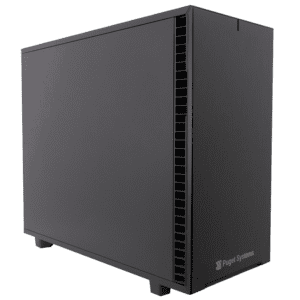Ubuntu 19.04 will be released soon so I decided to see if CUDA 10.1 could be installed on it. Yes, it can and it seems to work fine. In this post I walk through the install and show that docker and nvidia-docker also work. I ran TensorFlow 2.0- alpha on Ubuntu 19.04 beta.
How To Install CUDA 10 (together with 9.2) on Ubuntu 18.04 with support for NVIDIA 20XX Turing GPUs
NVIDIA recently released version 10.0 of CUDA. This is an upgrade from the 9.x series and has support for the new Turing GPU architecture. This CUDA version has full support for Ubuntu 18.4 as well as 16.04 and 14.04. The CUDA 10.0 release is bundled with the new 410.x display driver for Linux which will be needed for the 20xx Turing GPU’s. If you are doing development work with CUDA or running packages that require you to have the CUDA toolkit installed then you will probably want to upgrade to this. I’ll go though how to do the install of CUDA 10.0 either by itself or along with an existing CUDA 9.2 install.
PyTorch for Scientific Computing – Quantum Mechanics Example Part 4) Full Code Optimizations — 16000 times faster on a Titan V GPU
This is the 16000 times speedup code optimizations for the scientific computing with PyTorch Quantum Mechanics example. The following quote says a lot,
“The big magic is that on the Titan V GPU, with batched tensor algorithms, those million terms are all computed in the same time it would take to compute 1!!!”
PyTorch for Scientific Computing – Quantum Mechanics Example Part 3) Code Optimizations – Batched Matrix Operations, Cholesky Decomposition and Inverse
An amazing result in this testing is that “batched” code ran in constant time on the GPU. That means that doing the Cholesky decomposition on 1 million matrices took the same amount of time as it did with 10 matrices!
In this post we start looking at performance optimization for the Quantum Mechanics problem/code presented in the first 2 posts. This is the start of the promise to make the code over 15,000 times faster! I still find the speedup hard to believe but it turns out little things can make a big difference.
PyTorch for Scientific Computing – Quantum Mechanics Example Part 2) Program Before Code Optimizations
This is the second post on using Pytorch for Scientific computing. I’m doing an example from Quantum Mechanics. In this post we go through the formulas that need to coded and write them up in PyTorch and give everything a test.
Doing Quantum Mechanics with a Machine Learning Framework: PyTorch and Correlated Gaussian Wavefunctions: Part 1) Introduction
A Quantum Mechanics problem coded up in PyTorch?! Sure! Why not? I’ll explain just enough of the Quantum Mechanics and Mathematics to make the problem and solution (kind of) understandable. The focus is on how easy it is to implement in PyTorch. This first post will give some explanation of the problem and do some testing of a couple of the formulas that will need to be coded up.
Why You Should Consider PyTorch (includes Install and a few examples)
PyTorch is a relatively new ML/AI framework. It combines some great features of other packages and has a very “Pythonic” feel. It has excellent and easy to use CUDA GPU acceleration. It is fun to use and easy to learn. read on for some reasons you might want to consider trying it. I’ve got some unique example code you might find interesting too.
Easy Image Bounding Box Annotation with a Simple Mod to VGG Image Annotator
In this post I go through a simple modification to the VGG Image Annotator that adds easy to use buttons for adding labels to image object bounding-boxes. It is very fast way to do what could be a tedious machine learning data preparation task.
The Best Way to Install TensorFlow with GPU Support on Windows 10 (Without Installing CUDA)
In this post I’ll walk you through the best way I have found so far to get a good TensorFlow work environment on Windows 10 including GPU acceleration. YOU WILL NOT HAVE TO INSTALL CUDA! I’ll also go through setting up Anaconda Python and create an environment for TensorFlow and how to make that available for use with Jupyter notebook. As a “non-trivial” example of using this setup we’ll go through training LeNet-5 with Keras using TensorFlow with GPU acceleration. We’ll get a setup that is 18 times faster than using the CPU alone.
How to install CUDA 9.2 on Ubuntu 18.04
If you are wanting to use Ubuntu 18.04 and also want a CUDA install this post should help you get that working.
